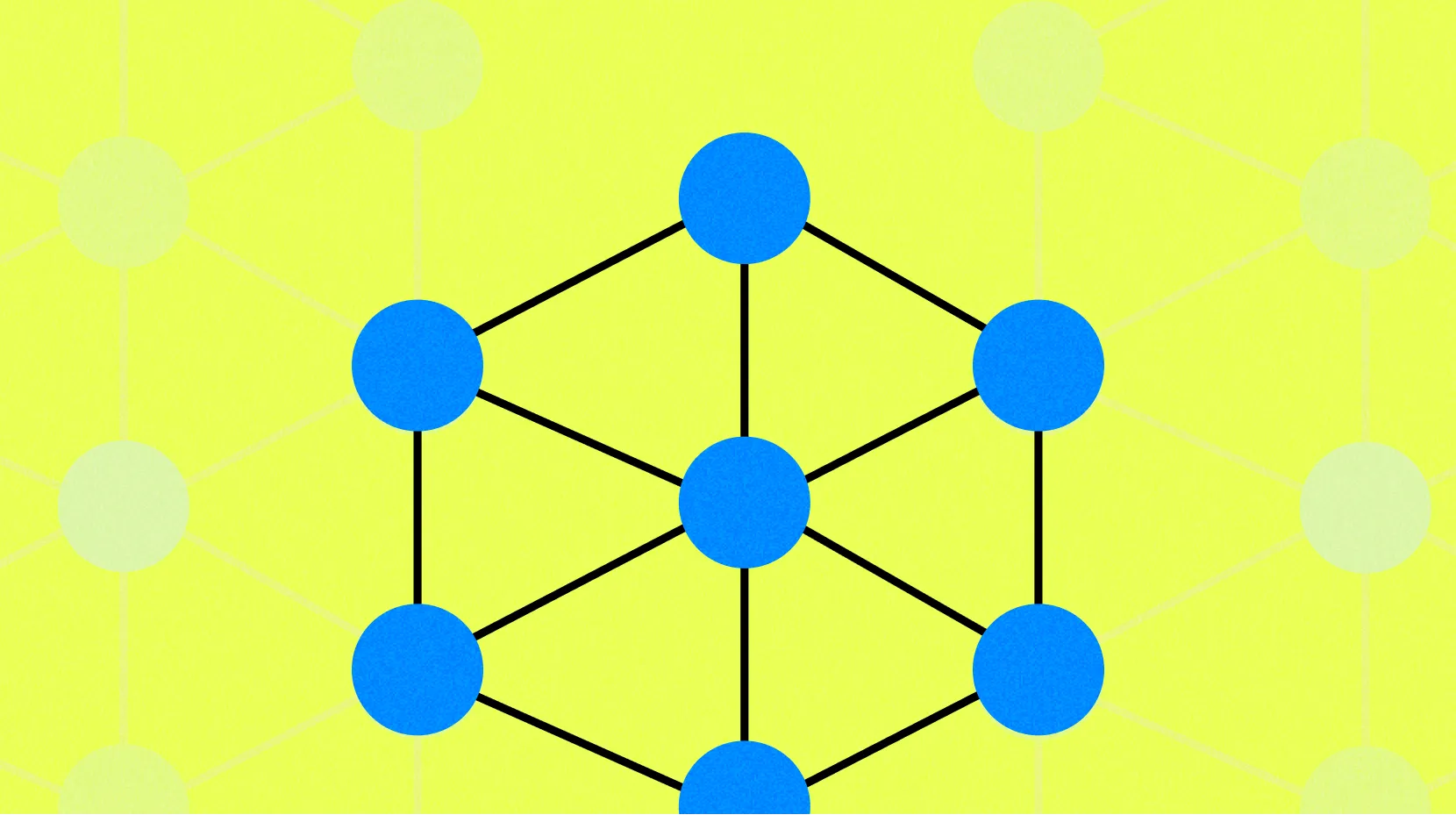传统互联网提供商
在这门课程中,我们将探索DeWi生态系统,并研究其克服传统互联网服务模式中的高成本、可扩展性挑战和环境影响的潜力,为更具包容性和可持续性的未来做好准备。
长期以来,作为全球通信基石的传统电信业一直是以中心化管理的结构为特征,由少数几家大公司主导。这种权力集中导致了一些重大缺陷,影响了消费者和互联网连接的发展。首先,该行业经常因缺乏竞争而受到批评,这可能导致价格高昂、消费者选择有限以及创新缓慢。在许多地区,接入互联网的成本仍然高得令人望而却步,导致全球大部分人口难以负担得起可靠的高速互联网。其次,这种中心化模式带来了隐私和安全方面的漏洞,因为用户必须信任这些为数不多的实体来处理他们的个人资料和敏感数据。此外,支撑传统电信业的基础设施既是资本密集型的,也是资源密集型的,会引发环境问题。它需要由电缆、信号塔和数据中心组成的庞大物理网络,其建设和维护对环境的影响很大。此外,该行业对新技术的适应速度较慢,可能会阻碍更高效、更可持续的解决方案的部署,从而限制了向更环保、更创新的互联网连接方案迈进的步伐。传统电信模式的这些固有缺陷突出表明,迫切需要转变模式,采用更加分散、公平和可持续的互联网接入方式,例如新兴的分散无线(DeWi)倡议所提出的方式。.

来源:https://www.researchgate.net/
当前互联网提供商的局限性
传统的互联网服务提供商(ISP,Internet Service Provider)在我们连接互联网的过程中扮演着重要角色,它们使用 DSL、电缆、卫星和光纤等多种技术提供服务。它们管理着大型物理网络基础设施,其中包括大量电缆和服务器系统。这些基础设施是连接互联网主干网所必需的,而互联网主干网是一个遍布全球的大容量数据链接网络。互联网服务提供商维护着重要的 “最后一里路 “连接,这种连接至关重要,但其质量和速度却因技术和覆盖地点的不同而大相径庭。
然而,这种传统的互联网服务方式存在一些限制因素,影响了可访问性、可靠性和用户自由度。其中一个主要障碍是服务质量和可用性的地域差异。由于在农村和偏远地区扩建实体基础设施成本高昂、后勤复杂,这些地区在接收可靠、快速的互联网服务方面经常面临重大障碍。因此,出现了数字鸿沟,即某些群体上网条件差或根本无法上网,限制了他们参与数字经济。
此外,该系统对有形基础设施的依赖使其本身容易受到自然灾害、维护问题和老化的损害。这些弱点会导致服务频繁中断,维修和更新响应时间过长,损害用户的上网体验。
传统的互联网服务提供商的定价和服务计划存在局限性。在竞争较少的某些地区,互联网服务提供商可以设定费率和带宽限制,这导致消费者承担高昂的费用,但服务质量并未相应提高。此外,传统互联网服务提供商的集中化管理也引发了严重的隐私和安全问题。用户被迫将自己的敏感信息托付给这些公司,而集中式的数据流可能成为安全漏洞的风险点。
传统ISP的运营模式,其中访问互联网主干网可能涉及与其他提供商的费用支付或协议,可能在数据流量管理中产生瓶颈和低效。这种模式可能导致互联网速度更慢和延迟更高,尤其是在高峰使用时间,直接影响用户体验。
总之,虽然传统互联网服务提供商在提供互联网接入方面发挥了重要作用,但其模式存在一些局限性,阻碍了实现普遍、可靠和公平的互联网连接的潜力。这些挑战凸显了采用创新方法提供互联网的必要性,例如去中心化无线(DeWi),其目的是利用分散式 Web3 技术提供更方便、安全和以用户为中心的互联网接入解决方案,从而克服这些局限性。
主要优势有哪些?
- 互联网接入: 互联网服务提供商提(ISP)的主要好处是提供互联网接入,这是现代世界通信、娱乐、工作和教育的一项基本服务。
- 服务范围: 许多 ISP 还提供基本互联网接入以外的一系列服务,如电视、电话服务、虚拟主机和电子邮件,通常以折扣价捆绑提供。
- 不同的网速选择: ISP 通常提供不同速度(带宽)的套餐,以满足用户的不同需求,从基本的电子邮件和网页浏览到高清视频流和在线游戏。
- 客户支持: ISP 通常提供客户服务和技术支持,帮助用户排除和解决与互联网连接或其他服务相关的问题。
- 可用性: ISP 通常拥有广泛的网络覆盖,即使在偏远或农村地区也能访问互联网,但这可能因互联网服务提供商和特定地区而异。
- 安全服务: 一些 ISP 还提供额外的安全服务,如杀毒软件、防火墙、家长控制和垃圾邮件过滤,以帮助保护客户的设备和数据。
- 灵活的计划: ISP 通常提供灵活的计划,允许用户根据需求变化升级或降级互联网套餐。例如,如果用户需要更多的带宽或更高的速度,他们可以切换到不同的计划。
请记住,具体的好处可能因 ISP 及其提供的计划而异。有些 ISP 注重提供高速互联网,而有些则可能提供更全面的绑定服务或优先以客户服务为考量。
有哪些问题呢(可扩展性、成本、环境影响)?
传统的互联网服务提供商(ISP)在可扩展性、成本和环境影响方面面临着一些挑战。以下是对这些问题的深入探讨:
- 可扩展性: 随着对互联网接入和更高带宽的需求持续攀升,ISP 面临着巨大的扩展性挑战。在人口密集的城市区域或地理环境恶劣的农村地区,扩大物理基础设施以满足需求既复杂又昂贵。为满足更快速度和更大数据量的需求升级技术,如从铜缆过渡到光纤,也是一项艰巨的任务。
- 成本: 基础设施的高成本是互联网服务提供商面临的另一个主要问题。铺设新电缆的相关费用,尤其是高速宽带或光纤连接的相关费用,可能令人望而却步。这一问题在农村地区尤为突出,因为农村地区的客户群较小,且分布在大片区域,投资回报率较低。此外,维护现有基础设施和处理网络问题也需要大量费用。
- 其他挑战: 除可扩展性、成本和环境影响外,互联网服务提供商还面临其他问题,包括监管挑战、安全威胁,以及需要不断进行技术创新,才能在快速发展的数字环境中保持竞争力。
- 现有互联网基础设施对环境的影响:现有的互联网基础设施对环境的影响是巨大且多方面的,主要源于其庞大的物理网络的建设、运行和维护。这些网络包括数据中心、传输线路和终端用户设备。 数据中心对互联网的运行至关重要,尤其是能源密集型数据中心。它们消耗大量电力用于运行和冷却系统,防止过热。全球数据中心的能源消耗巨大,导致温室气体排放增加,并且在许多情况下,这些数据中心依赖不可再生能源。 电缆和网络设备等物理基础设施的制造和部署对环境造成了重大影响。这涉及到原材料的采集、制造和运输,这些过程都会导致碳排放、污染和自然资源的损耗。 此外,为消费者提供互联网服务的”最后一里路”连接解决方案通常需要安装庞大的电缆网络或建设信号塔,进一步影响自然景观和生态系统。 过时或废弃设备产生的废物也是一个环境挑战。技术的飞速发展导致硬件更新换代很快,从而产生了大量的电子垃圾。如果这些垃圾没有得到适当的回收或处理,可能含有对环境有害的物质。

有哪些替代方案?
面对这些挑战,人们正在探索几种提供互联网连接的替代解决方案。以下是其中几种:
- 社区网络: 这是用户运营的网络,当地社区共同建设和维护自己的互联网连接基础设施。这是一种草根做法,在偏远或服务不足的地区尤为有效,因为在这些地区,传统互联网服务提供商可能看不到有利可图的市场。
- 网状网络(Mesh Network): 在网状网络中,每个设备(或 “节点”)都直接连接到其他几个设备,形成一个由互联设备组成的网络。信息可以通过多个节点到达目的地,从而提高网络的弹性,并有可能减少对昂贵基础设施的需求。
- Helium:一个针对物联网设备的去中心化区块链网络,以独特的方式解决了传统互联网服务提供商面临的挑战。它的网络扩展依靠个人部署热点,从而减少了对大量互联网服务供应商基础设施的需求,并实现了偏远地区的覆盖。网络增长的成本由热点所有者分担,因此更加经济,而且参与者可以通过 Helium 的加密货币获得激励。此外,与传统网络设置相比,这些热点的耗电量更低,对环境的影响也更小。虽然 Helium 特别适用于物联网通信,可以作为传统互联网服务提供商的补充,但它并不能完全取代高带宽的互联网服务。
- 卫星互联网: 随着 SpaceX 的 Starlink 和亚马逊的 Kuiper 项目等公司的发展,卫星互联网正成为一种更可行的选择。它可以提供全球覆盖,无需昂贵的地面基础设施,尤其是在难以到达的地区。不过,延迟和数据传输速率问题仍是挑战。
- 5G 网络: 与前几代技术相比,5G 技术有望实现更高的速度和更低的延迟。虽然它仍需要大量基础设施,但容量和效率的提高可使其成为人口稠密城市地区更有效的解决方案。
- 互联网气球或无人机: 谷歌的 Project Loon 和 Facebook 的 Aquila 等项目旨在从空中提供互联网连接。高空气球或无人机有可能覆盖大片区域,从而减少对地面基础设施的需求。
- Li-Fi: Li-Fi 利用光传输数据,将灯泡变成网络设备。虽然这仍是一项新兴技术,有其自身的一系列挑战,但它有可能无缝集成到现有环境中。
- DeWi: DeWi 旨在将互联网基础设施的控制权和所有权从中心化的 ISP 转移到由个人用户和社区组成的分布式网络。通过利用区块链技术,它允许个人用户与他人共享网络带宽,并赚取代币作为回报,从而有效地将每个用户变成一个小型ISP。这可以增加网络覆盖,尤其是在服务不足的地区,并减少对传统互联网服务提供商的依赖。
这些替代方案各有利弊,没有一个是完美的解决方案。未来的互联网连接可能会涉及几种不同技术的组合,以适应不同地区和人群的具体需求和情况。





